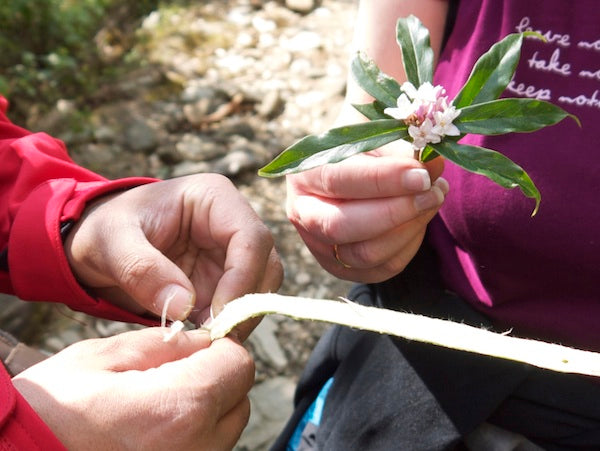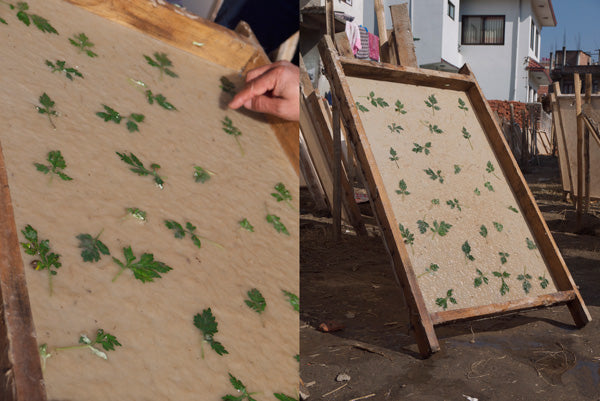How is Nepalese Lokta Paper Made?
Lokta paper is made from the bark of the bush named Daphne Papyrus, which only grows at an altitude of 6500ft or above in the Himalayas.

The inner bark is stripped away, but the root system isnt damaged and regrows ~ making this a fully sustainable resource! The plant itself grows to about waist height and the flowers have a beautiful fragrance similar to that of the Hyacinthe, and when the bark is stripped off there is a wonderful aroma just like inside a pea pod!

The Lokta bark has to be boiled for eight hours to soften and break down the fibres, and it is then hand sifted before being pulped to a smooth paste.


At this stage of production leaves and flower petals can be laid onto the pulp to create stunning papers, and also seeds can be added to the mixture for seeded papers.

Once the frame has been drained, it is dried in the sun (which doesnt take very long for most of the year) before removal and stacking ready for the many uses the lokta paper is used for.

Various techniques can be used to create the stunning patterns and designs you see on our products, one of these is Screen Printing. Every single sheet is hand printed using water based paints, and then each sheet is dried once again in the sun.

Another technique is the Lokta paper being dyed into various base dye colours. Almost all of the colours are achieved through natural dyes, with no chemicals or acid being used at any stage. The dyes are created from plants and minerals and this method has been used for many centuries in Nepalese paper production.
Batik paper is created by wax being applied to the natural lokta paper sheets, and then it is dried in the sun. Once dry it can be dyed into any of the many base colours. Alternatively, the wax shapes which have been applied can be painted in a rainbow of colours ~ take a look at our Multi Square paper to see this stunning effect.





